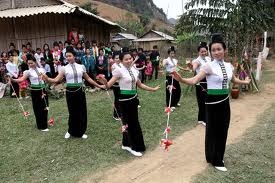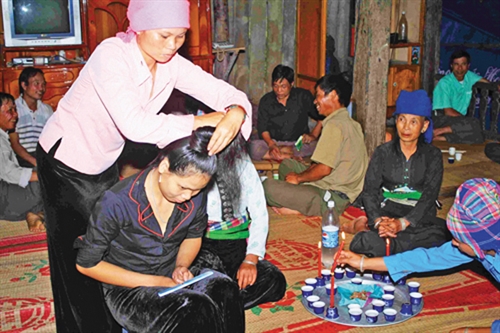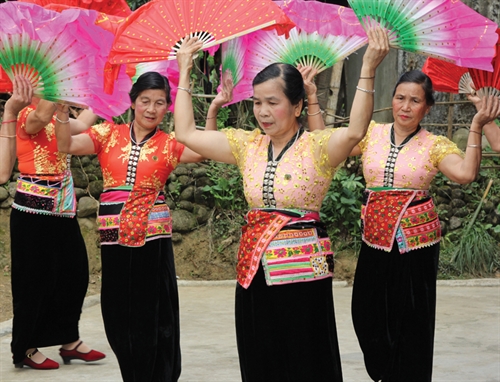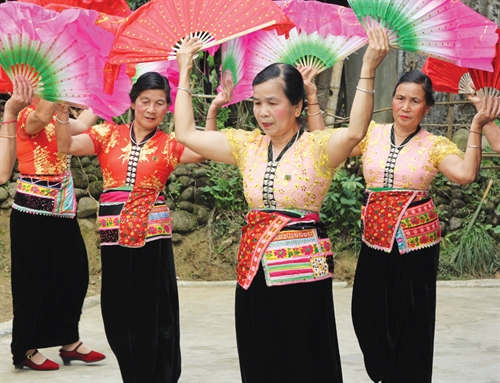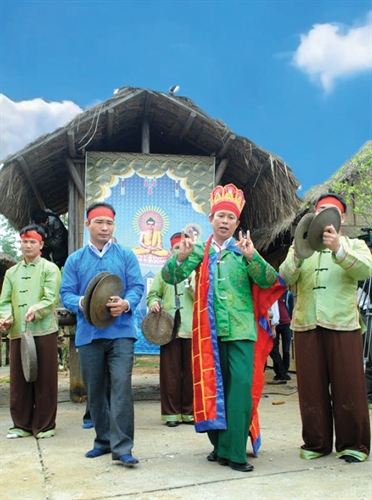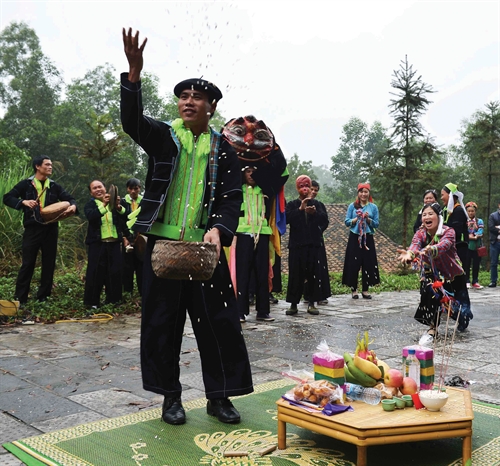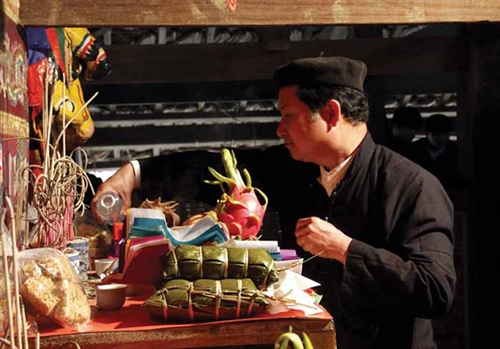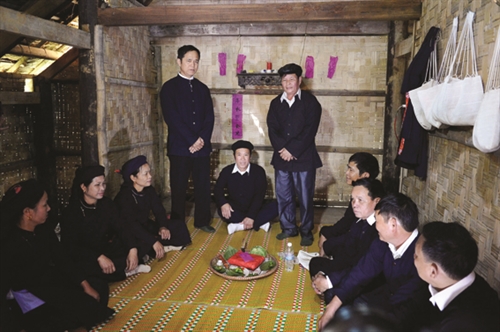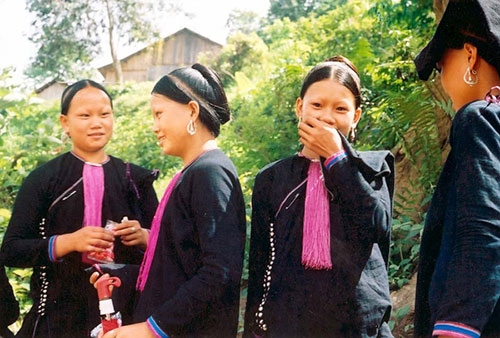Ta Thi Tam
Ethnology Institute
Sa Yang Va is the name of the ceremony dedicated to the Goddess of Rice, the biggest festival of the Cho Ro ethnic group living mostly in Dong Nai southern province with a population of nearly 27,000.
The ceremony is rooted from the Cho Ro’s belief that every creature has a spirit. The spirit of rice, believed to be a female deity, is one of the three most important gods revered by the group. The other two are the God of Forest and the God of Home, who, together with the Goddess of Rice, are believed to have direct influence on the life of the Cho Ro.
Sa Yang Va ceremony is held annually in the second or third lunar month after harvest time to show the Cho Ro’s gratitude to the Goddess of Rice for giving the community a bumper crop. It is also a chance for villagers to thank other gods and seek their support for peace and happiness for their families.
To prepare for the ceremony, every Cho Ro family sets up and decorates cay neu (ceremonial tree) in the courtyard of the house. The family also makes two small cay neu from bamboo in the shape of rice ears, one placed on the altar and the other at the barn. For the Cho Ro, these two trees symbolize not only the Mother of Rice - the root of fertility - but also the harmony between humans and gods, and show their aspiration for the existence and development of humans on earth.
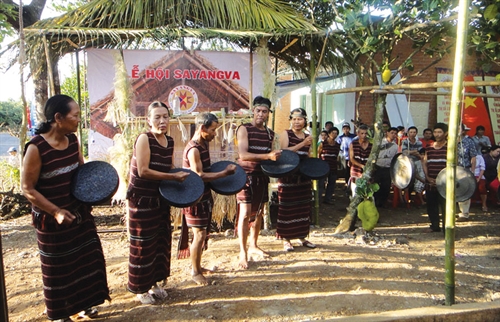 |
| Playing gongs in Sa Yang Va festival__Photo: Internet |
Sa Yang Va officiation consists of two parts, the first of which is held at the family altar in veneration of the God of Home. The altar of a Cho Ro family always faces the east, the direction where the sun rises, with its back fixed to the wall. It is made of wood with three layers, on the upper two are placed two beeswax lamps. One small cay neu is set up on the middle layer of the altar, hung with some officiating objects or stuck with a candle. On the bottom layer are placed a big jar of ruou can (rice wine drunk out of a jar through stalks), and other small jars containing rice, bean and sesame. The gongs used during officiation are hung on the wall opposite the altar.
The second part Sa Yang Va, which is devoted to the Goddess of Rice, is officiated at the barn, the place believed to be the shelter of the mother of rice. A Cho Ro barn must be built to the east in an airy area close to the house. Building a barn facing another direction is believed to be an offense to the Goddess of Rice and result in poor harvests. Taking care of the barn must be an elderly woman in the family who is supposed to take rice from the barn early in the morning only. Breaching this rule, family members are believed to suffer serious illness.
Before holding Sa Yang Va ceremony, every family cleans up and decorates their home, particularly the altar, as well as the barn in preparation for the formality to escort the Goddess of Rice from the field to the barn.
It also has to prepare a boar and a rooster as sacrifice of the ceremony.
Indispensable offerings of Sa Yang Va are banh day (round-shaped glutinous rice cake) and ruou can. Other offerings include com lam (sticky rice cooked in bamboo cylinders), pork, fish and vegetables.
Days before Sa Yang Va is held, the family head will go and invite guests, bringing with him banh day and ruou can as gifts for the invited guests. The guests are family clan members living in other villages and people in the neighborhood who have close ties with the family. A person going to invite guests to Sa Yang Va can be easily recognized for his wearing a red turban and two tree-sap spots marked on his cheeks. Attending Sa Yang Va, a guest often brings a present which can be liquor, rice, fish or chicken.
Sa Yang Va is officiated in the morning in three rituals: escort of the Goddess of Rice from the field to the barn, officiation to the God of Home at the altar, and veneration to the Goddess of Rice at the barn.
In the first ritual, a worshiping formality is conducted to escort the Goddess of Rice to the barn from the field where an area with ripe, heavy rice ears is left unharvested. Only during this ritual are these rice ears reaped and brought into the house before being taken to the barn. The escort to the house is meant for the Goddess to witness the sacrifice of a boar and a rooster under cay neu in the courtyard, a formality to thank the gods for their protection of the crop. When escorting the Goddess to the barn, the elderly woman in charge of keeping rice of the family will pour the first basket of rice into the barn.
After the Goddess of Rice is escorted to the barn, the second ritual dedicated to the God of Home is held at the family altar. Officiating objects prepared for this ritual include some rice ears kept from the previous crop, a bunch of tobacco leaves, two luffa gourds, and two bunches of forest areca flower. These objects are all hung from the roof above the altar. On the top layer of the altar are placed two beeswax lamps, two banh day and some com lam. Above this layer is also hung a string of lower jaws of hunted wild animals. A tray of banh day, a jar of ruou can, a basket of dried rice, jars containing sticky rice, maize and bean is also placed on the ground in front of the altar. Other venerating objects include candles and aloes wood incenses. The gongs and other musical instruments used for the ritual are also placed in front of the altar.
In this formality, the ritual conductor recites prayers, sincerely thanking the gods for their protection of the crop for the family and the village and pleading for their support for peace and prosperity for the whole community.
The last ritual in reverence of the Goddess of Rice takes place at the barn where a small cay neu is set up and a tray of banh day, com lam, pork, chicken meat and ruou can is placed as offerings. This ritual shows the Cho Ro’s deep gratitude to the Goddess who is believed to grant prosperity for the community.
Once the three rituals are completed, the ceremony holder invites elderly villagers and guests to drink ruou can in front of the altar. According to custom, the oldest woman in the village is the first to be offered with ruou can, which shows the Cho Ro’s gratitude to their women who have the heavy duty of taking care of family affairs. The guests are then served food and drink and the ceremony closes.-
